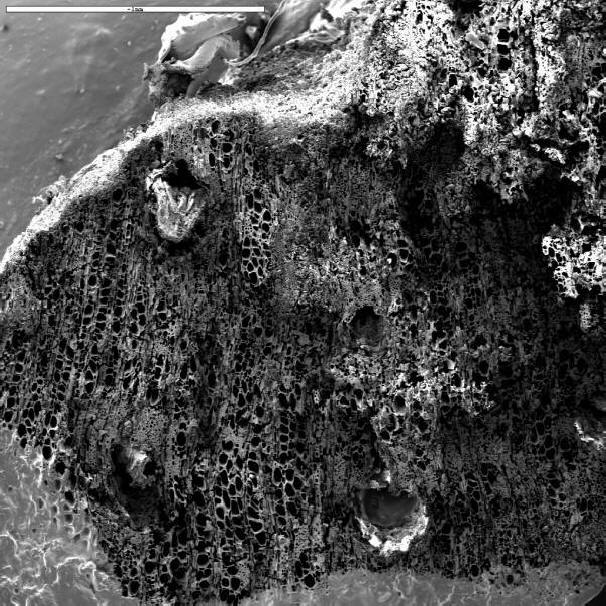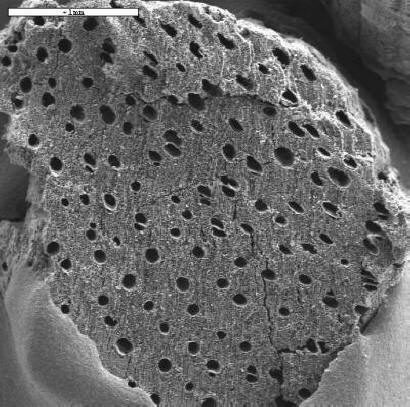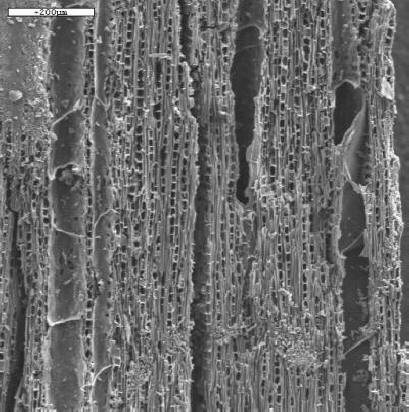
A rare piece of sandalwood (Santalum alba) from Sanganakallu. Santalum is a species non-native to the steppic vegetation of the South Indian plains. It must have been transported to the site on purpose, probably for use in some ritual function. Such a find also casts doubt on the widespread assumption that sandal-wood is not native to the Indian peninsula.



The probability that woods (very likely fuel woods) were used for "ritual" purposes at Sanganakalllu in prehistoric times, is strengthened further by the very sporadic finds of strychnine wood (Strychnos sp.; shown below). Strychnos (especially the species S. nux-vomica) is a tree that grows in the dry deciduous forests of South India. Its infamous product (strychnine) is a lethal poisonous substance which abounds in almost every part of the plant including its wood. We cannot reconstruct the precise content of rituals that might have been associated with its presence in the archaeobotanical sequence of Sanganakallu. Yet its association with (ritual?) firing events (it was found carbonised) seems likely.

A piece of Terminalia-type charcoal from the site of Hallur, near the Western Ghats



A piece of Anogeissus from Hallur. Anogeissus is a species characteristic of dry deciduous vegetation.

© Eleni Asouti, 2006